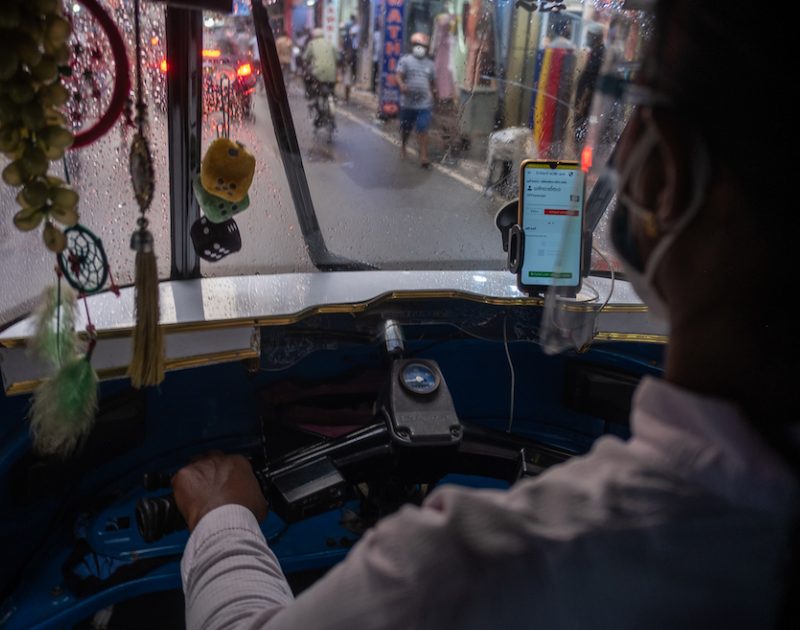
- Home
- Knowledge Insights
- Impact of Sri Lanka’s Economic Crisis on the Exports Sector
While steady growth in exports. was recorded in the year 2021, Sri Lanka’s deepening economic crisis runs the serious risk of impacting the export recovery achieved to date. In March 2022, merchandise exports, consisting largely of industrial and agricultural exports, recorded a decline of 3.4% in earnings., compared to the previous year, due to a reduction in both volume and prices of exports. In addition to this, industry representatives predict a decline of about 20% – 30% in total exports as a result of the current crisis,. with tea exports being among the lowest it has been in 23 years,.
and the apparel sector expecting a 20% – 25% drop in output by August. 2022. Latest figures for June indicate that apparel sector has exceeded expectations and pre-Covid export numbers. .
In the context of the economic crisis, escalating now to a de facto lockdown across the country, understanding the challenges posed to the country’s external sector performance, one of Sri Lanka’s main sources of foreign exchange,. is crucial. At present, exports of goods and services, which account for 17.7% of GDP. as of 2021, have been adversely affected by several factors including most significantly, the worsening fuel and energy crisis.
How has the economic crisis affected exports?
Certain government policy decisions have affected/continue to affect exporters in general, while others are specific to some sectors. For example, a Government gazette published in March this year required the repatriation of foreign exchange earnings within 180 days of transactions. as part of the policy decision to convert foreign exchange proceeds into Sri Lankan rupees which was introduced last year.. While the move was designed to boost Sri Lanka’s dwindling foreign exchange reserves, it led to complications. in the ability of exporters and suppliers to import raw materials that would be required for their export production processes. Moreover, it has led to a situation whereby export companies especially those with foreign ownership are discouraged to repatriate money into their businesses in Sri Lanka given the economic and political instability in the country.
In addition to this, a sector-specific (i.e., agricultural sector) policy decision was taken last year to ban chemical fertilizer. The ill-advised policy resulted in a 15% drop in tea production. and export earnings in the first quarter of 2022, the lowest it has been since 2009. Although the ban was later lifted, the lack of foreign reserves made it difficult to secure the requisite fertilizer from abroad for agriculture production including tea. Consequently, in April this year, the price of a kilogram of tea surpassed Rs. 1500, for the first time in 127 years, as production fell.. While the price of fertilizer has increased almost fourfold, rendering it an unbearable cost to producers, industry representatives are hopeful that the drastic increase in tea prices will offset the decline in the volume of tea exports, estimated at approximately 4.24 million kgs. for the first quarter of this year.
One of the key channels of impact through which the crisis is impacting exports is the ongoing fuel crisis. Lack of fuel has disrupted the day-to-day operations of industries in the export sector. With the onset of long hours of scheduled power cuts across the country, many export-driven businesses invested in generators, as a means of ensuring the smooth operation of their businesses. However, the lack of diesel to operate the generators in the factories and offices, together with the high fuel costs, has adversely affected these businesses and constrained their productive capacities.
In addition to this, the fuel crisis has also made it almost impossible for workers to travel to work with an almost 50% decline in operative public transport.. This is especially problematic for those industries where it is impossible to transition to a Work from Home (WFH) model, such as those that require onsite, manual labour for production purposes.
In the apparel sector, some exporters are now compelled to spend 400% more on fuel and generator costs., which has significantly increased overheads, possibly contributing to making Sri Lankan apparel exports less competitive in the international market. For instance, there is a concern that exporters may lose their orders to neighbouring competitors. Additionally, the fact that some exporters may be required to air-freight their goods if they fail to meet the delivery targets,.
is also a cause for concern amongst exporters who lack the requisite funds for such a purpose. Jet fuel shortage has forced airlines to limit payload of each flight, cutting down both passenger and cargo capacities and driving up fares and air freight rates. As a representative of the tea industry pointed out, ‘without fuel, there is no economy’. This rings true in the present context, where it has become difficult for industries to transport staff and goods.
also a cause for concern amongst exporters who lack the requisite funds for such a purpose. Jet fuel shortage.
has forced airlines to limit payload of each flight, cutting down both passenger and cargo capacities and driving up fares and air freight rates. As a representative of the tea industry pointed out, ‘without fuel, there is no economy’. This rings true in the present context, where it has become difficult for industries to transport staff and goods.
The ongoing fuel crisis and its impact on exporters are further exacerbated by the government’s lack of a plan to streamline the distribution of fuel on a priority basis for exporters. As highlighted by an industry representative, the government should ideally allow exporters to receive some prioritization at certain centralized depots whereby they can secure diesel and petrol to power their generators and provide transport for their workforce. The lack thereof has deprived exporters of key resources required to run their businesses though there have been subsequent measures for exporters to buy fuel and pay in US dollars.
The energy crisis is another key channel of impact through which the export industry is presently affected. Frequent and long hours of power cuts have disrupted the energy supply for exporters, affecting agricultural, industrial and services sectors. The disruptions in power cuts have affected the operation of factories/businesses and the production processes therein, at times requiring some factories to halt production altogether which in turn affects their efficiency and delivery.
In the IT/BPM sector; the fifth largest export earning sector in Sri Lanka,s. long hours of power disruptions at different times of the day, have affected the levels of productivity of workers in light of an inability to meet the demands of high-performance work including work that requires teamwork, performed by the workers’ in the IT/BPM sector. The apparel sector too may not be able to achieve its 6 billion USD target for the year 2022,. in light of the long hours of power disruptions. This concern is more so for SMEs, as large-scale manufacturers have proactively adopted alternative renewable energy sources, and this has mitigated some of the worst disruptions to production.
Another significant channel identified is the shortage of foreign exchange in Sri Lanka.. The shortage of dollars has made it difficult for exporters and importers to import raw materials and other goods that may be required for export production processes. In April this year, the Export Credit Guarantee Corporation, which provides credit risk insurance and related services for exports, put Sri Lanka in the Restricted Cover Category-I., which has resulted in international suppliers being wary of shipping goods to Sri Lanka.. The threat this poses to exporters’ production is significant, particularly for those industries that rely on imports for value addition/production purposes. Moreover, the forex restrictions are likely to further dissuade exporters with foreign ownership from investing in Sri Lanka due to the current economic situation.
In addition to the aforementioned, the loss of buyer confidence. in certain industries in light of the worsening economic instability in Sri Lanka has also posed a threat to key industrial sectors like the apparel sector, which accounts for approximately 40% of total export revenue earned by Sri Lanka.. Buyer confidence, which depends heavily on the information buyers’ are provided on Sri Lanka’s economic predicament, informs their decision on whether exporters will be able to (i) meet delivery targets and (ii) maintain the quality and technical standards of those orders. These are increasingly under threat given the worsening situation in the country.
If the unstable economic situation continues into the second half of the year (which it most likely will) there is a serious concern that an estimated 30% – 40%. of orders intended for Sri Lanka originally, could be diverted.
to other neighbouring countries like India. It has been reported that the textile hub of Tirupur in Tamil Nadu and Tea Estates in Assam are experiencing a surge in overseas orders. as a result of the economic crisis in Sri Lanka although exporters in Sri Lanka stated that they haven’t yet experienced any loss of orders. Nonetheless, international buyers are likely to de-risk Sri Lanka and scale back on future orders if the situation in the country does not improve soon. Given the significance of these sectors as sources of foreign exchange, the diversion would be detrimental to Sri Lanka’s forex situation.
As exporters prioritize certain aspects of their business (i.e., expenditure on fuel and energy for instance) over others such as research and development and innovation; it is easy for the latter to be overlooked. One of the important concerns raised by an industry representative in this regard was the fact that almost all exporters, except for a few large exporters, are not currently involved in any research and development of export-oriented products, given the need to prioritise the more urgent needs facing exporters. This will undoubtedly have an impact on the ability of exporters’ to enter new markets and adapt to the emerging needs of the international market.
The current economic crisis has made living in Sri Lanka a daily struggle for many. A survey published last November. indicated that the number of individuals that want to migrate had doubled, with about 50% of the young and educated considering migration. The crisis has only exacerbated this situation. This is a serious concern for the future of export industries that depend on a skilled workforce, which is already limited and unable to meet the needs of the export industry.
As highlighted by an industry representative of the IT/BPM sector, the sector derives its competitive edge through the talent it possesses and attracting the best talent in the country. With many of the technically skilled staff in these businesses looking to migrate, especially those with families, the industry is at a serious juncture and may need to prioritize staff retention measures to ensure the continuity of the industry. Despite pegging salaries to the US dollar to ensure that their workers get paid adequately in the context of substantial depreciation of the rupee and runaway inflation, the representative noted that there has been an uptick in people migrating abroad looking for stability and security compared to other years.
Exporters have displayed resilience and responded to the crisis by taking initiatives to ride through difficult times by adapting to the situation. Respective industry associations also have assisted their members in terms of sharing information regarding regulatory changes, securing fuel to run factories and businesses via
LIOC and bunkering companies. by paying in dollars in the short term whilst looking at alternative sources of energy in the medium term to overcome the fuel and energy crisis, voicing their concerns to the government and calling for an early resolution to the crisis. The main ask of the exporters from the government is to restore stability and trust and confidence in the country through economic and political reforms. In the immediate and medium term, an early resolution to the energy and fuel crisis is a necessity and exporters have suggested: prioritising and streaming the distribution of fuel to operate the factories; informing about the power cuts in advance so that production could be planned accordingly and renewing emphasis on renewable energy sources like solar. Also, reactivation of the Export Development Council of Ministers (a high-level forum chaired by the President) and better consultative process were suggested to take formulate and implement decisions affecting the sector and resolve export related issues respectively.
/END/
Nimaya Dahanayake is a researcher with the Centre for a Smart Future, and graduated in Economics and Management from the University of London International Programmes. She is currently completing studies at Law Faculty, University of Colombo. She was selected as a member of the Sri Lankan Moot Court Team that qualified for the global rounds of the John H. Jackson Moot Court Competition in Geneva.
Dr Janaka Wijayasiri is a Visiting Fellow at the Centre for a Smart Future, and has extensive experience working on international trade policy. He was previously the Head of the International Economics Policy Unit at the Institute of Policy Studies of Sri Lanka. Janaka holds a PhD from Monash University, Australia.
Cover image – Colombo International Container Terminals at the Colombo Port, (c) Anushka Wijesinha.


